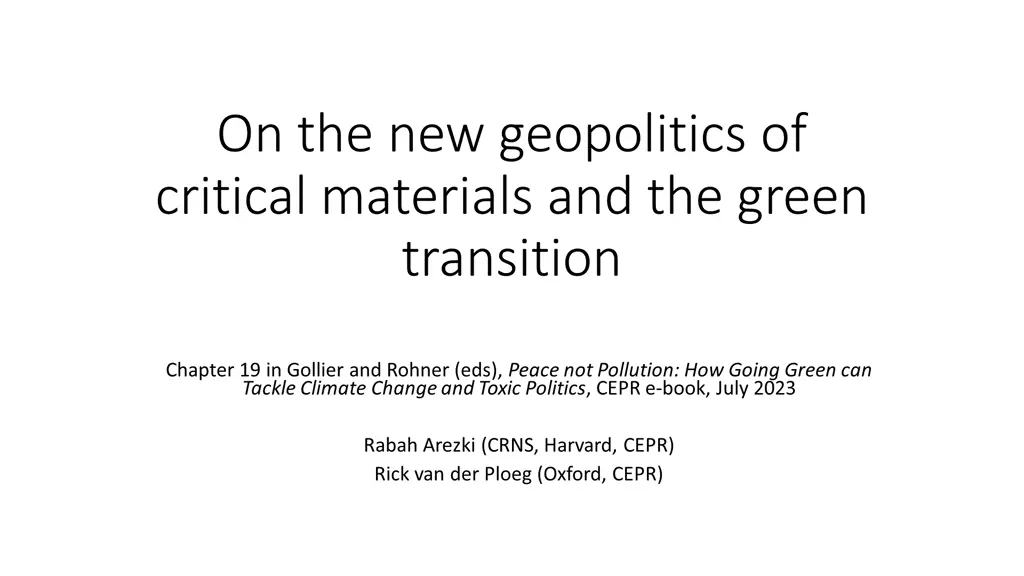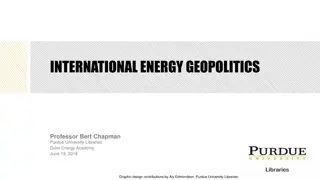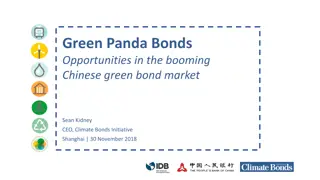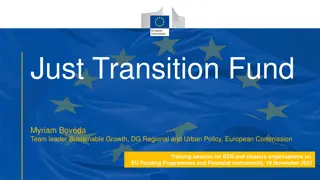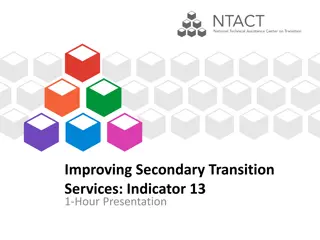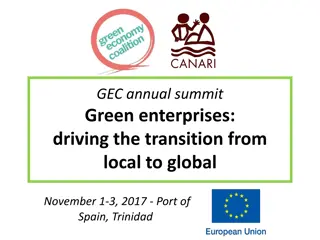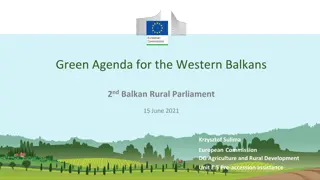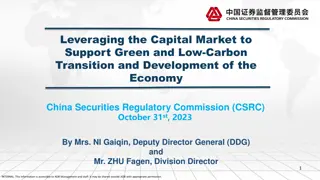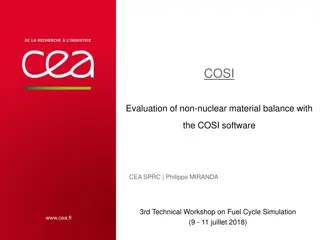Geopolitics of Critical Materials & Green Transition
Explore the evolving geopolitical landscape of critical materials and the implications for the green transition. Discover how countries are securing their supply chains and the need for new industrial policies. Consider the challenges of governance and sustainability in this changing global context.
- critical materials
- green transition
- geopolitics
- supply chains
- industrial policies
- governance
- sustainability
- global context
Download Presentation

Please find below an Image/Link to download the presentation.
The content on the website is provided AS IS for your information and personal use only. It may not be sold, licensed, or shared on other websites without obtaining consent from the author. Download presentation by click this link. If you encounter any issues during the download, it is possible that the publisher has removed the file from their server.
E N D
Presentation Transcript
On the new geopolitics of critical materials and the green transition Chapter 19 in Gollier and Rohner (eds), Peace not Pollution: How Going Green can Tackle Climate Change and Toxic Politics, CEPR e-book, July 2023 Rabah Arezki (CRNS, Harvard, CEPR) Rick van der Ploeg (Oxford, CEPR)
News of Today (5 July 2023) China counters in chips war by capping exports of two earth materials from August onwards, ostensibly to protect national security: Gallium (important for production of semiconductors and solar panels; avoids batteries becoming empty too quickly) Germanium (used in glass fibre cables and infrared technology, used a lot by defence) 98% produced in China, but can produced as by-product of zinc and coal mining (very dirty) Nasty geopolitics: what if China limits exports of materials that are very difficult to replace such as lithium The Netherlands under pressure of the US further limited exports by chip producer ASML EU (like Japan, South Korea and Taiwan) will need to stockpile these metals
New Age of National Security Ukraine was has seen deliberate sabotage of the global economy Weaponize food and energy supplies Tensions over Taiwan, dominant in semiconductor manufacturing Technology tensions between US and China, and now also between EU and China From dependence on Russia for gas to dependence on China for critical raw materials needed for the green transition Multipolar world with African countries often voting in UN not alongside EU and US Economic fragmentation: Yellen talks of friendshoring
The Race for Critical Materials Wind turbines, solar PVs, CSP (concentrated solar power) electricity networks, EVs and nuclear power require copper, lithium, nickel, silicon, cobalt, uranium, etc. Issues of security of supply: friend-shoring and new industrial policies Risk of frustrating green transition required to meet Paris targets Need to understand supply chain for critical materials Demand for critical materials (graphite, nickel, lithium and rare earth materials) will explode Mineral demand for clean technologies will grow 4 times by 2040, especially for EVs
Geography of Critical Materials Production and Processing Production of critical materials scattered: see figure below It is prevalent in China, US and EU, who consume more than they produce and thus depend on exporters of raw materials such as Australia, Russia, Kazakhstan, DRC, Mozambique, Chile, South Africa and Zimbabwe The latter are and will be courted by the superpowers Example: Almost half of global lithium mining is currently in Australia, almost a third in Chile, about 15% in China, and 4.6% in Argentina China has oversized control over supply chains as well as concentration of production of critical materials: White House Report on National Security (2021) states that China owns two thirds of critical materials in the world!
New Industrial Policies Needed for Net Zero Both EU and US launched plans to secure access to critical materials and secure homemade supply chains to limit dependence from China E.g.: US actively supports mining of critical materials in Canada Inflation Reduction Acts uses extensive tax credits to boost clean energy investments at home: response to China s green industrial policy and China now super processor of critical materials and producers of solar PVs and other critical equipment The incentives are very big ($1.6 trillion): see next slide Europe is concerned, especially given the energy crisis De-globalization risks
Shifting Geopolitics between Major Blocks and Rest of the World Ramping up of mining will lead to greenhouse gas emissions and irreversible pollution and will use up scarce water supplies When labour standards are weak, working conditions will be harsh and child labour rampant Cf. competition among 19thcentury European empires for copper, tin, rubber, timber, diamond and gold War for critical materials might slow down or reverse democratization in developing countries (think of resource curse from new geopolitical rents, need for materials tax ?) E.g.: DRC is courted by both China and the US despite poor track record in governance and human right abuses
Getting Governance of Critical Materials Right Governance should account for the interdependencies related to peace and stability, global health, environmental and climate issues in a world increasingly organized into blocs Technology transfers from advanced to developing economies to provide tools to address threat of climate change and meet climate goals including by moving value chains of critical materials Access to international capital markets through, for example, green, nature, or blue bonds instead of opaque resource-backed loans with non-traditional creditors such as China Ensure that foreign direct investment delivers on local content, environmental protection, and jobs to address rising discontent in communities where mining or other extractive industries operate Equal distribution of benefits , provide local jobs, avoid toxic politics See final chapter by Rohner for political economy and more phase-out policy suggestions
Concluding comments We must get governance right to avoid the risk especially for populations in Africa to be left behind in a remake of 19th century power competition which seize critical resources to power the Industrial Revolution of the time It is incumbent of leaders of the continent to put the right governance in place to balance maximizing foreign investment and maximizing benefit for their citizens While there is competition on securing raw materials, the competition is through the value chain and China has thus far concentrated dominant positions throughout that value chain The US, Europe and China in courting mineral-rich countries such as DRC should not turn a blind eye on governance, environmental damage, and human rights
